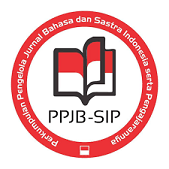PENERAPAN MODEL PEMBELAJARAN TUTOR SEBAYA UNTUK MENINGKATKAN KEMAMPUAN MENDONGENG SISWA KELAS VIIG SMP N 2 SAWAN
DOI:
https://doi.org/10.23887/jjpbs.v7i2.11583Abstract
Penelitian Tindakan Kelas ini bertujuan untuk mengetahui (1) langkah-langkah penerapan model pembelajaran Tutor Sebaya untuk meningkatkan kemampuan mendongeng siswa kelas VIIG SMPN 2 SAWAN, dan (2) hasil belajar mendongeng menggunakan model pembelajaran Tutor Sebaya pada kelas VIIG SMPN 2 SAWAN. Subjek penelitian ini adalah siswa kelas VIIG SMPN 2 SAWAN dan objek yang dikaji adalah penerapan model pembelajaran Tutor Sebaya untuk meningkatkan kemampuan siswa dalam mendongeng. Metode pengumpulan data yang digunakan adalah metode observasi dan metode tes. Data dianalisis dengan teknik analisis data kualitatif dan kuantitatif. Berdasarkan analisis hasil penelitian yang telah dilakukan, ditemukan dua hal berikut, (1) Langkah-langkah penerapan model pembelajaran Tutor Sebaya dalam mendongeng adalah siswa dibagi menjadi beberapa kelompok heterogen, setiap kelompok menentukan satu tema bebas untuk dilatihkan, perwakilan kelompok mempresentasikan pekerjaannya, siswa kembali ke bangku masing-masinguntuk menerima tes. (2) Hasil belajar siswa dengan menggunakan model pembelajaran Tutor Sebaya terbukti dapat meningkat. Skor rata-rata siswa pratindakan adalah 73,6. Pada siklus I, skor meningkat menjadi 75,3, dan meningkat lagi pada siklus II menjadi 77,32. Oleh karena itu, peneliti menyarankan agar model pembelajaran ini dapat diterapkan oleh guru bahasa Indonesia untuk meningkatkan kemampuan mendongeng siswa.Kata Kunci : Pembelajaran, Tutor Sebaya, Meningkatkan, Mendongeng
This classroom action research was aimed at finding out (1) the steps of the implementation of Peer-Tutor learning model in improving the ability of the students of class VIIG of SMPN 2 Sawan in telling fairytales. The subjects of this research were the students of class VIIG of SMPN 2 Sawan and the object being examined was the implementation of Peer-Tutor learning model to improve the students’ ability in telling fairytales. The methods of data collection applied were observation and test methods. The data were analysed by applying the qualitative and quantitative data analysis tecniques. The findings of the analysis showed that, (1) the steps conducted in implementing the Peer-Tutor learning model were students were divided into several heterogeneous groups, every group determined one free theme to be exercised, the representatives of each group presented their works, students were back at their desks to do tests, (2) It is proven that the results of the students’ study increased. The average score of the students before the implementation of the method was 73.6. In Cycle I, the score increased to 75.3 and increased again in cycle II to 77.32. Therefore, the researcher suggested that the learning model could be implemented by Indonesian language teachers in improving students’ ability in telling fairytales.
keyword : learning, Peer-Tutor, Telling Fairytales
Published
2017-07-28
Issue
Section
Articles
License
Authors who publish with the Jurnal Pendidikan Bahasa dan Sastra Indonesia Undiksha agree to the following terms:- Authors retain copyright and grant the journal the right of first publication with the work simultaneously licensed under a Creative Commons Attribution License (CC BY-SA 4.0) that allows others to share the work with an acknowledgment of the work's authorship and initial publication in this journal
- Authors are able to enter into separate, additional contractual arrangements for the non-exclusive distribution of the journal's published version of the work (e.g., post it to an institutional repository or publish it in a book), with an acknowledgment of its initial publication in this journal.
- Authors are permitted and encouraged to post their work online (e.g., in institutional repositories or on their website) prior to and during the submission process, as it can lead to productive exchanges, as well as earlier and greater citation of published work. (See The Effect of Open Access)







